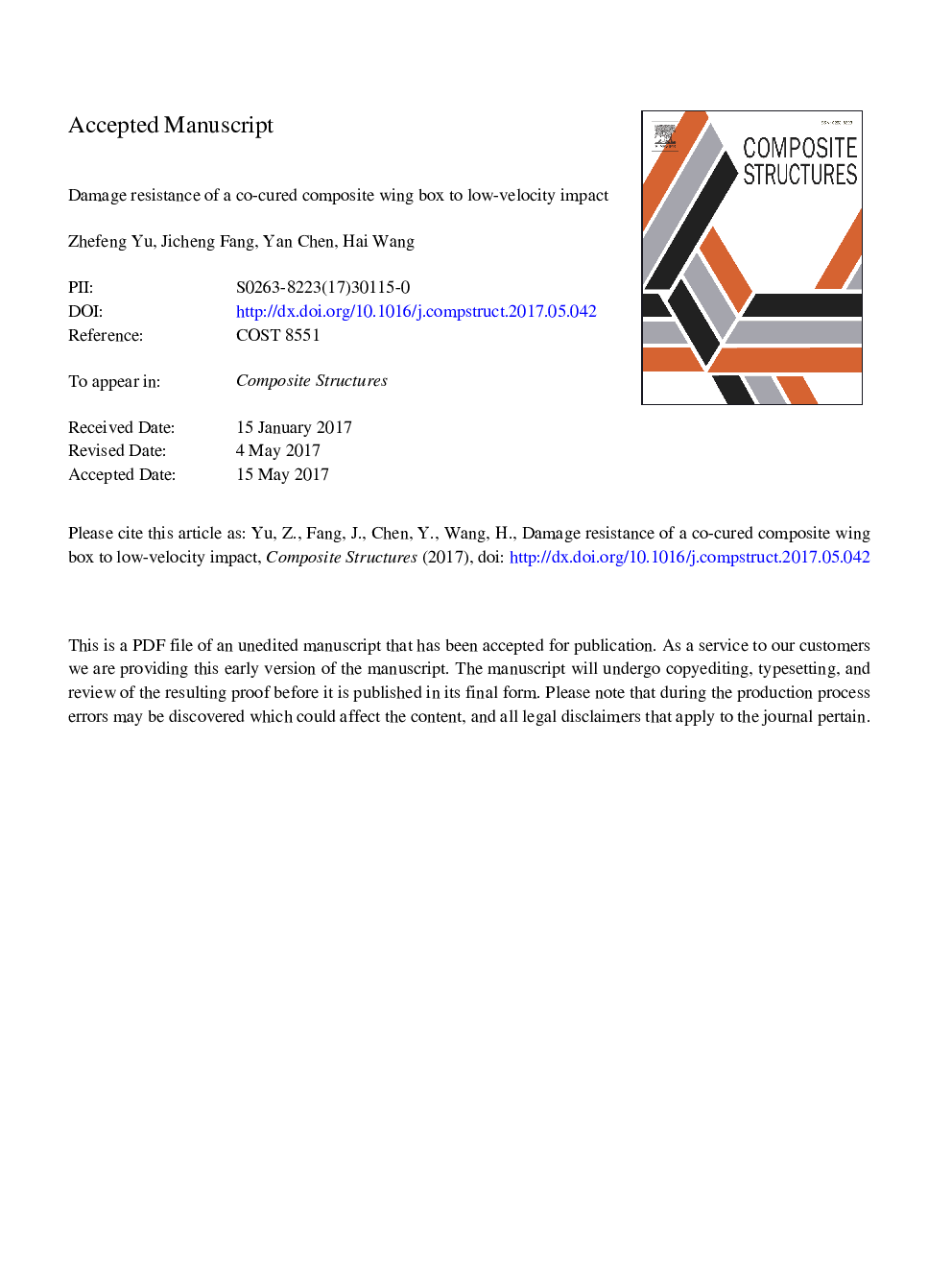| Article ID | Journal | Published Year | Pages | File Type |
|---|---|---|---|---|
| 4911742 | Composite Structures | 2017 | 25 Pages |
Abstract
In this study, low-velocity impacts were applied to an aircraft wing box fabricated by co-curing its spar and skin. The impact points were located at the bay (type A), the T joint (type B), and the spar (type C). The contact force and the energy absorbed by the wing box were compared with those of a full-scale horizontal tail. The contact force of the latter was lower while the energy absorbed was greater. An analytical model is proposed to predict the delamination threshold load of type-B impact based on that of type A, which is effective for both the wing box and the horizontal tail. The static bending test was performed on another wing box after being impacted with 60Â J of energy at five locations. The strain responses around the impact point show the propagation of the delamination at the type-A point. The fracture occurred at the location near the fixture rather than at the type-A point. Therefore, the correct impact point should be located on the fracture line in order to investigate the influence of the impact damage on the residual strength of the wing box.
Keywords
Related Topics
Physical Sciences and Engineering
Engineering
Civil and Structural Engineering
Authors
Zhefeng Yu, Jicheng Fang, Yan Chen, Hai Wang,
